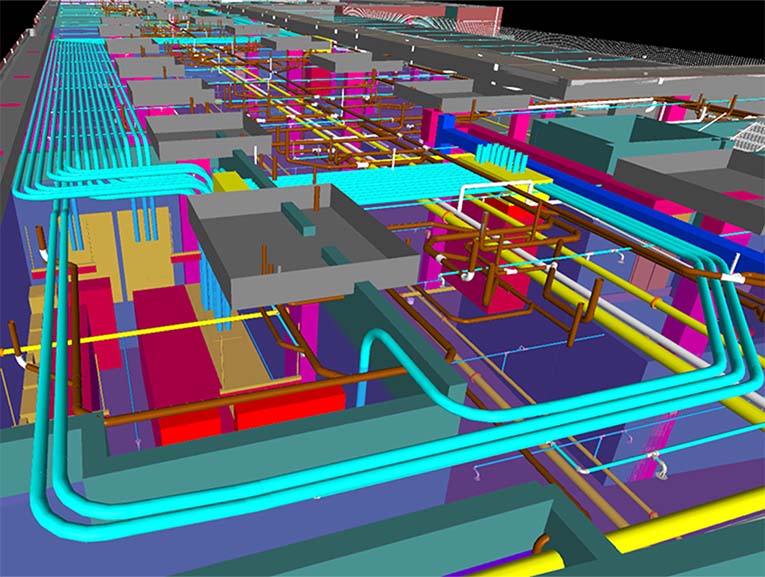
According to MarketsandMarkets, the Building Information Modeling (BIM) market is projected to grow from $8.0 billion in 2024 to $14.8 billion by 2029, with a 13.1% CAGR. This growth is fueled by rising sustainability demands, expanding construction projects, government support, and the push for seamless collaboration.
As more architecture firms and construction companies shift to digital workflows, BIM is becoming a must-have skill for architects. Whether you are an aspiring architect or a professional, mastering BIM can open doors to high-paying opportunities and innovative projects. But how do you find the right BIM modelling jobs in the U.S.?
This guide will walk you through the essential steps, from honing BIM skills to landing the perfect role in a competitive job market.
Understanding BIM Job Roles for Architects
The field of BIM jobs offers a variety of career paths for architects, each requiring specialized skills and expertise. Whether you are starting out or looking to advance, understanding these roles can help shape your career in design with BIM.
1. BIM Architect
Focuses on integrating BIM architect skills into project design, ensuring accuracy, efficiency, and collaboration across teams
2. BIM Coordinator
Manages digital models, coordinates between disciplines, and ensures BIM workflows comply with industry standards.
3. BIM Manager
Leads BIM strategy for a firm, oversees project execution, and develops workflows to improve efficiency.
4. BIM Consultant
Works with firms to implement BIM strategies, train teams, and optimize digital project delivery.
5. BIM Technician
Assists in creating and maintaining digital models, ensuring that designs align with BIM standards.

Key Skills Required to Find a BIM Job
To secure a BIM job, professionals need a mix of technical expertise, software proficiency, and strong collaboration skills. Mastering these key abilities can boost job prospects and career growth in the field.
1. Software Expertise
Mastering the best BIM software for architects, such as Revit, Navisworks, and ArchiCAD, is crucial. Proficiency in these tools ensures efficiency in project planning and execution.
2. Technical Knowledge
Understanding 3D modeling, clash detection, and digital workflows helps architects streamline design processes. This is one of the key benefits of BIM for architects, as it enhances collaboration and reduces errors.
3. Project Coordination
The ability to work with engineers, contractors, and designers is essential. Strong coordination skills ensure seamless integration of BIM models across teams.
4. Soft Skills & Communication
Employers seek professionals who can articulate design concepts, resolve conflicts, and work well in teams. Clear communication improves project outcomes.
5. BIM Certification & Continuous Learning
Enrolling in a BIM certification online course helps validate skills and stay updated with industry advancements, giving job seekers a competitive edge.

Best BIM Certification Courses to Boost Your Resume
Applying for BIM certificate programs can set you apart in the competitive architecture and construction industry. With companies seeking skilled professionals, the right certification enhances your technical expertise, improves job prospects, and strengthens your resume for global opportunities. Explore these top certification courses that you can consider applying to.
|
Course Name |
Duration |
Fees |
|
Novatr - Building Information Modelling (BIM) for Architects |
7 months |
$3500 |
|
Arizona State University - Building Information Modeling (BIM) Certificate Program |
3-6 months |
N/A |
|
BIM Certificate Program by Virtual Design & Construction Institute |
8 months |
N/A |
|
BIM Training and Certificate Program by Advenser |
N/A |
N/A |
|
Diploma in (BIM) and Project Management Professional (PMP) by Udemy |
4 hours 34 mins |
$27.21 |
Why Novatr’s BIM Course is the Best Choice for a BIM Career in the USA?
Novatr is a leading platform dedicated to upskilling architects and engineers with cutting-edge BIM certification courses tailored for the global job market. Its industry-focused programs equip professionals with the latest tools and techniques to excel in Building Information Modeling. Here are some essential pointers to learn why Novatr is your best choice to start your BIM career in the USA.
- Learn to work with the best BIM software for architects, including Revit, Navisworks, and ArchiCAD, ensuring you stay ahead in the industry.
- Gain credibility with BIM certification courses designed to meet international standards, enhancing job opportunities in top firms.
- Work on real-world projects and case studies to develop practical BIM expertise that employers seek.
- Get mentored by experienced BIM professionals who provide insights into the latest trends and best practices.
- Access job assistance, portfolio-building sessions, and a network of professionals to boost your career in the USA.

Best Job Portals & Networking Strategies to Find BIM Jobs in the USA
In today’s competitive job market, the right platform can make all the difference for job seekers and employers. Modern job portals offer more than just listings, they provide career tools, networking, and various BIM training opportunities. Here is a list of the top 5 job portals in the U.S. to help you find the perfect opportunity.
1. Kloudhire
It is one of the largest and most recognized job portals in the USA, offering a vast selection of job listings across various industries. It stands out for its user-friendly interface, allowing job seekers to upload resumes and apply with just one click. The platform provides advanced search filters, making it easier to find roles based on location, salary, and experience.
2. LinkedIn Jobs
LinkedIn Jobs is a powerful platform that seamlessly integrates with LinkedIn’s professional network, making job searching more dynamic. It offers personalized job recommendations based on your profile and allows direct connections with recruiters. Beyond listings, it helps job seekers build valuable industry relationships, showcase skills, and receive endorsements, increasing their chances of securing the right opportunity.
3. ZipRecruiter
It is another portal that stands out for its user-friendly platform, designed for quick and easy job applications. With one-click submissions, instant notifications, and AI-based job matching, it ensures a seamless experience for job seekers.
4. Monster
Monster has been a trusted job portal for years, offering a vast range of job listings and an intuitive interface. It provides resume posting services, career advice, and advanced search filters to streamline job hunting.
5. CareerBuilder
CareerBuilder uses AI-driven job-matching technology to help job seekers find roles that align with their skills and experience. It offers personalized resume recommendations, job alerts, and access to training resources.

How to Build a Strong BIM Portfolio to Stand Out to Employers?
Creating a compelling BIM architect portfolio is essential for showcasing your technical expertise and design capabilities to potential employers. Here are some of the ways you can showcase your BIM portfolio to improve the chances of landing on your dream job.
1. Showcase a Variety of Projects
A well-rounded BIM architect portfolio should highlight different types of projects, including residential, commercial, and infrastructure designs, to demonstrate versatility.
2. Incorporate High-Quality Visuals
Use detailed 3D models, renders, and construction documentation to visually communicate your design and technical skills effectively.
3. Emphasize Your Role and Contributions
Clearly outline your responsibilities in each project, detailing how you applied BIM methodologies to improve efficiency, collaboration, or sustainability.
4. Highlight Software Proficiency
Showcase your expertise in industry-leading BIM tools like Revit, Navisworks, and ArchiCAD, along with any relevant BIM certification you’ve earned.
5. Keep It Organized and Updated
Ensure your portfolio is well-structured, easy to navigate, and regularly refreshed with your latest work to reflect your growing expertise in the BIM field.
Conclusion
Finding a BIM job role as an architect in the USA requires the right mix of technical expertise, industry knowledge, and strategic networking. As firms increasingly adopt digital construction workflows, professionals with strong BIM skills and hands-on software proficiency are in high demand. Building a compelling portfolio, earning relevant BIM certifications, and staying updated with industry trends can significantly enhance job prospects.
For those looking to fast-track their careers, BIM Course for Architects by Novatr offers a structured path to mastering industry-relevant skills. Designed for both aspiring and experienced architects, this program provides hands-on learning, expert guidance, and career support to help professionals stand out in the competitive job market.
Do not forget to visit Novatr’s Resource Page for more updates!
Frequently Asked Questions
1. What skills do I need to land a BIM job?
To secure a BIM modelling job, you need proficiency in industry-leading software like Revit, Navisworks, and AutoCAD. Strong knowledge of 3D modeling, clash detection, and project coordination is crucial. Additionally, understanding construction documentation, sustainability practices, and interdisciplinary collaboration enhances job prospects.
2. Are BIM certifications necessary for architects?
While not mandatory, obtaining a BIM training certification significantly boosts an architect’s employability. Certifications from Autodesk, Novatr, and other leading institutes validate expertise and demonstrate commitment to industry standards. Many employers prefer certified professionals as they ensure a higher level of technical proficiency in BIM workflows.
3. What should I include in my BIM portfolio?
A strong BIM architect portfolio should showcase detailed 3D models, construction documentation, and real-world project applications. Including clash detection reports, parametric modeling, and interdisciplinary coordination work will highlight technical skills. Employers also appreciate clear explanations of problem-solving approaches in past projects.
4. What are the top BIM job roles available for architects?
Architects specializing in BIM can explore roles like BIM Coordinator, BIM Modeler, BIM Manager, Digital Design Specialist, and Computational Designer. These positions focus on project execution, software implementation, and data-driven design strategies. The demand for these roles is growing as firms transition to digital construction methods.
5. Which software should I learn for BIM jobs?
Proficiency in Revit, Navisworks, AutoCAD, Rhino, and Dynamo is essential for BIM roles. Revit is widely used for design and documentation, while Navisworks helps in clash detection and project review. Learning scripting tools like Grasshopper and Dynamo can also enhance automation capabilities in BIM workflows.
Was this content helpful to you











